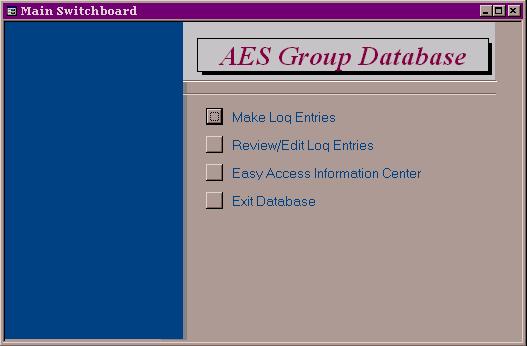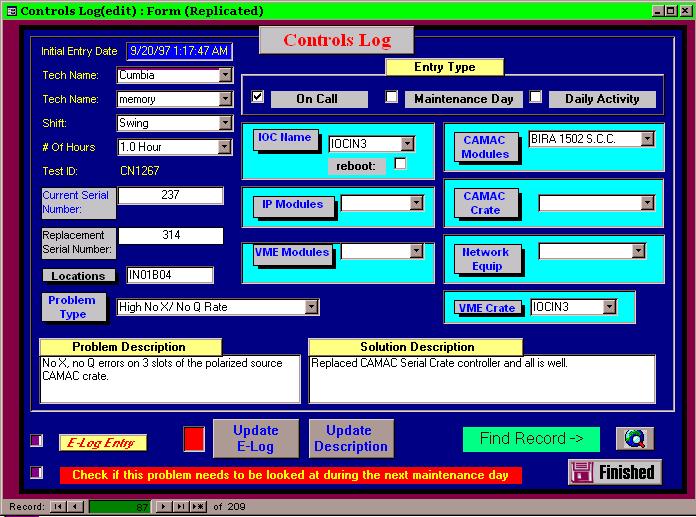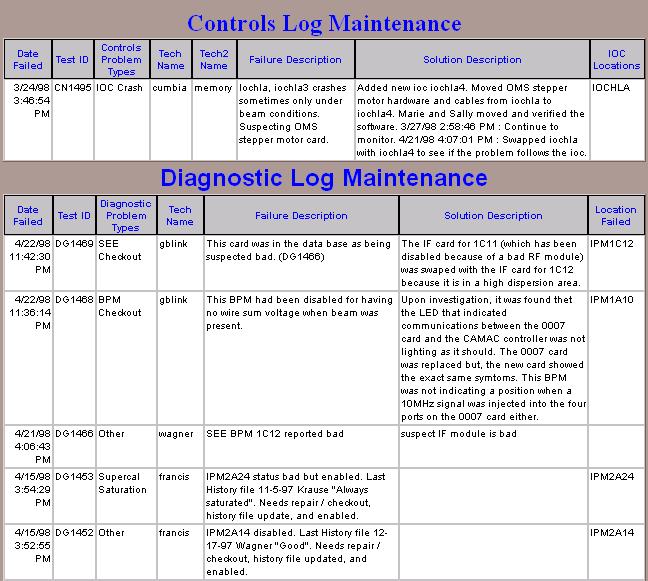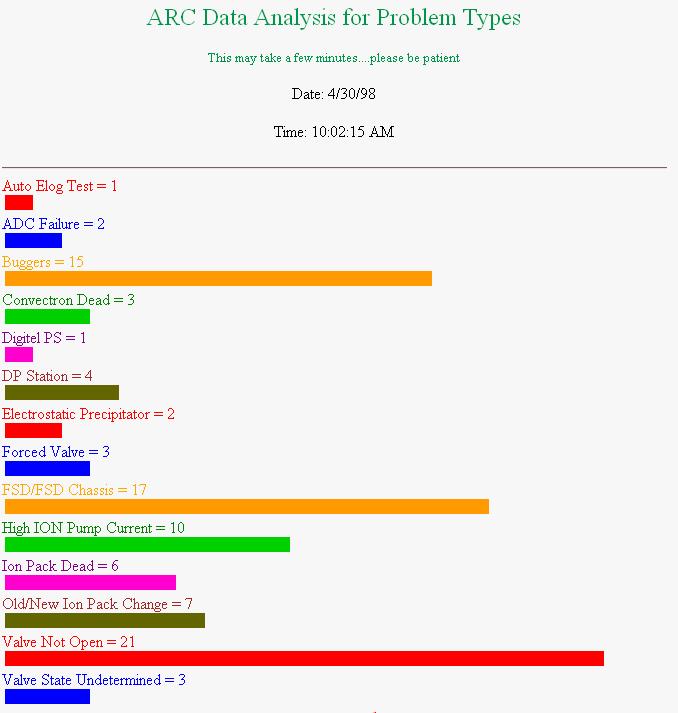
Maintenance Information Management Using Access/Visual Basic
Michael A. Memory, Brad W. Cumbia
Thomas Jefferson National Accelerator Facility, Newport News, Virginia U.S.A.
Maintenance Entries
The Accelerator Electronic Support Group (AES) is the group responsible for maintaining over 100 subsystems of the Nuclear Physics Accelerator at Jefferson Lab. Presently, there are 30 employees in the AES group. It is each individual’s responsibility to make entries into the AES Database. This Access/Visual Basic based database is the center for all work performed to the Accelerator by the AES group. At any time, an AES technologist can supply valuable information needed to track pending maintenance, data analysis of recurring problems, inventory tracking and the ability to export all of this information to a web based electronic log generated by Jefferson Lab Operations Group.

Figure 1
Figure 1 is the top-level menu for all AES personnel to interface with the database. To insert an entry the user must go to the "Make Log Entries" area and decide which system requires an entry. The AES maintained systems have been broken up into subsystems. They are Controls, Diagnostics, Magnets, RF, Vacuum (arc & srf), Gun and Satellite systems. Figure 2 is an example of the Controls System entry form.

Figure 2
Pending Maintenance
Many problems go unresolved due to severity and operational priorities. Many problems require immediate attention and others can be put on hold until the next scheduled down. In either case, the AES database tracks this information. In Figure 2 the "Check if this problem needs to be looked at during next maintenance day" is available for all system entries. This flags the entry for further investigation during the next scheduled down. Figure 3 illustrates typical Controls and Diagnostic System pending maintenance report.

Figure 3
The above report is generated by SQL queries and is viewable on the web.
Data Analysis
The most valuable part of a database is the data analysis. This can help in finding repeat problems and trends. SQL queries pull information from the database. Information is displayed in a variety of formats. Figure 4 shows a count of Arc Vacuum Problem Key Words. This simple query gives us information for the most common occurring problem in the Arc Vacuum System.

Fugure 4